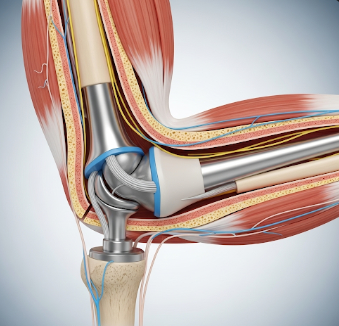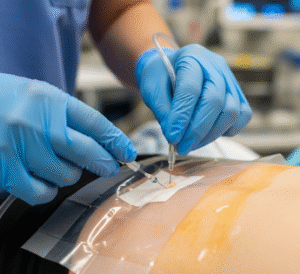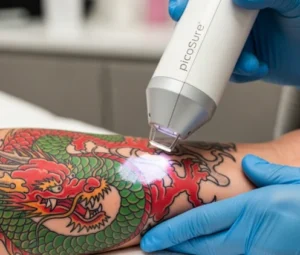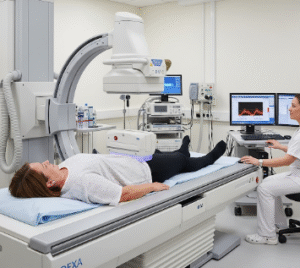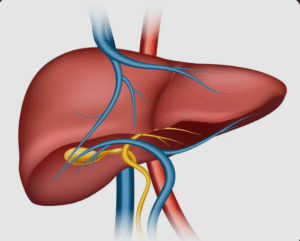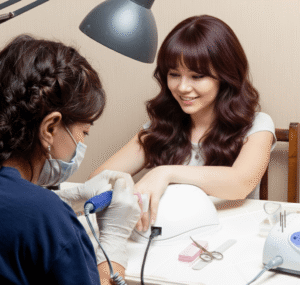Overview
Total elbow replacement (TER), also known as elbow arthroplasty, is a surgical procedure in which a severely damaged elbow joint is replaced with an artificial implant made of metal and high-grade plastic components. It is often recommended for patients with severe arthritis, complex fractures, or chronic joint damage that limits movement and causes pain.
In Korea, orthopedic and joint replacement centers specialize in total elbow replacement using advanced surgical navigation, minimally invasive methods, and next-generation implants. The focus is not only on pain relief but also on restoring strength, mobility, and functional use of the arm.
What is Total Elbow Replacement?
Total elbow replacement involves removing the damaged portions of the humerus (upper arm bone) and ulna (forearm bone) and replacing them with prosthetic components connected by a hinge mechanism.
Indications include:
- ✦ Severe osteoarthritis or rheumatoid arthritis.
- ➤ Complex elbow fractures that cannot be repaired with fixation.
- ✦ Joint damage from previous injuries or surgeries.
- ➤ Tumors affecting the elbow joint.
- ✦ Severe pain and stiffness that restrict everyday tasks like lifting, dressing, or personal care.
Unlike partial elbow surgeries, TER provides a comprehensive solution by restoring function to the entire joint.
What are the Benefits?
Benefits of total elbow replacement include:
✅ Significant pain reduction in patients with severe arthritis or trauma.
➤ Restoration of joint function, allowing daily activities like eating, grooming, and writing.
✦ Improved mobility with a more natural range of motion.
➤ Better stability in patients with fractures that cannot be reconstructed.
✅ Enhanced quality of life and independence.
✦ In Korea, advanced surgical techniques reduce recovery time and improve implant longevity.
Procedure Details
1) How should I prepare for Total Elbow Replacement?
Preparation steps include:
- ✦ Clinical evaluation: medical history, blood tests, X-rays, and CT scans of the elbow.
- ➤ Medication review: stopping blood thinners and adjusting chronic medications.
- ✦ Pre-surgery physiotherapy: exercises to strengthen surrounding muscles.
- ➤ Infection prevention: dental check-up and skin care before surgery.
- ✦ Fasting: if undergoing general anesthesia.
- ➤ Counseling session: discussion of risks, implant type, and rehabilitation plan.
2) What happens during the procedure Total Elbow Replacement?
The surgery usually lasts 2–3 hours and is performed under general or regional anesthesia:
➤ Step 1: An incision is made along the back of the elbow.
✦ Step 2: Damaged bone and cartilage are removed from the humerus and ulna.
➤ Step 3: The humeral and ulnar canals are prepared to receive the prosthetic stems.
✦ Step 4: Prosthetic components (metal stems + plastic bearing) are cemented in place.
➤ Step 5: The hinge mechanism is connected, restoring elbow stability.
✦ Step 6: The incision is closed, and a protective dressing and splint are applied.
In Korea, surgeons often use computer-assisted navigation and customized implants for precise fit and better long-term outcomes.
3) What happens after Total Elbow Replacement?
After surgery, recovery typically involves:
- ✦ Hospital stay: 3–5 days.
- ➤ Pain management: with oral or IV medications.
- ✦ Immobilization: elbow is placed in a splint for the first 1–2 weeks.
- ➤ Physical therapy: begins early, focusing on controlled motion.
- ✦ Activity restrictions: heavy lifting (>5 kg) often discouraged permanently.
- ➤ Full recovery: most patients regain comfortable function in 3–6 months.
Risks / Benefits
Potential Risks:
- ✦ Infection at the surgical site.
- ➤ Loosening or wear of prosthetic components over time.
- ✦ Nerve or blood vessel injury.
- ➤ Joint stiffness or instability.
- ✦ Implant failure requiring revision surgery.
- ➤ Risk of dislocation if lifting heavy weights.
Benefits:
- ✅ Reliable pain relief for severe arthritis or fractures.
- ✅ Improved elbow function and stability.
- ✅ Restoration of independence in daily tasks.
- ✅ Long-lasting implants with proper care.
- ✅ Advanced Korean techniques reduce complications and speed up recovery.
Recovery and Outlook
Recovery requires strict adherence to rehabilitation protocols:
- ➤ Short-term (1–6 weeks): controlled physiotherapy, splinting, gradual pain reduction.
- ✦ Medium-term (2–3 months): progressive strength and motion exercises.
- ➤ Long-term (6–12 months): most patients achieve good function, though high-impact activities remain limited.
- ✦ Prosthetic lifespan: 10–15 years or more, depending on activity level and implant design.
Patients in Korea benefit from integrated rehabilitation programs that optimize recovery and protect implant longevity.
When To Call the Doctor
Seek medical help if you experience:
⚠ Persistent fever or chills (possible infection).
⚠ Severe swelling, redness, or discharge at the incision.
⚠ Numbness, tingling, or weakness in the hand or arm.
⚠ Severe unrelieved pain.
⚠ Sudden inability to move the elbow.
Best Korea Option / Process
Korea is a leading destination for joint replacement surgeries, including elbow arthroplasty. Advantages include:
- ✦ Highly trained orthopedic surgeons with global expertise.
- ➤ Cutting-edge prosthetic designs that improve durability and motion.
- ✦ Minimally invasive surgical techniques for reduced scarring.
- ➤ Advanced rehabilitation centers tailored for international patients.
- ✦ Competitive pricing compared to Western countries with comparable or superior outcomes.
- ➤ Multilingual support services for foreign patients.
Highlights of Total Elbow Replacement in Korea
- ✅ Restores arm function and reduces chronic pain.
- ➤ Safe, effective alternative for severe arthritis and fractures.
- ✦ Preserves daily independence with better joint mobility.
- ➤ Advanced Korean surgical expertise ensures high success rates.
- ✅ Comprehensive rehabilitation and patient-focused care.

